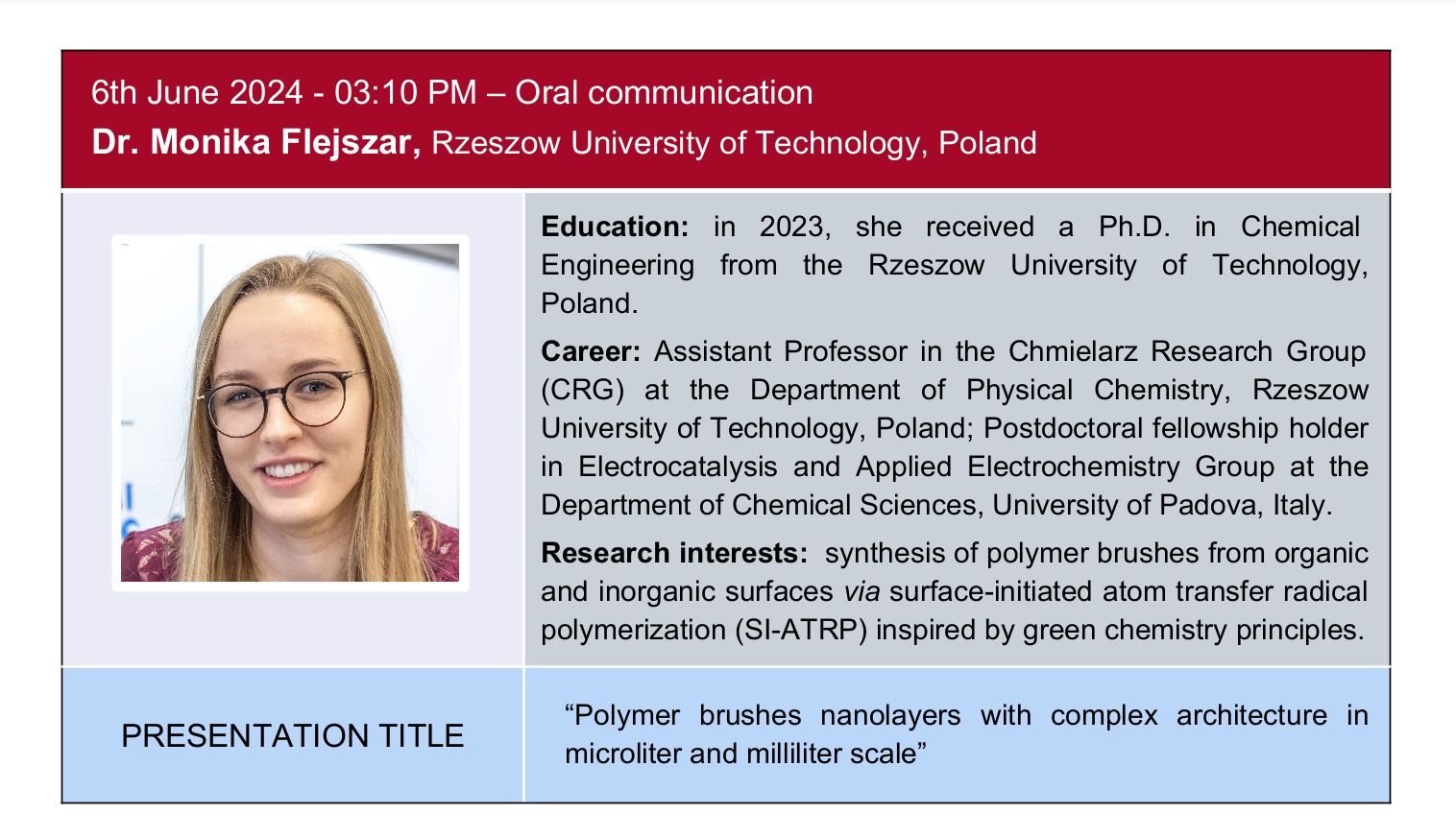Polymer brushes nanolayers with complex architecture in microliter and milliliter scale
Monika Flejszar, Kinga Ślusarczyk, Karol Wolski, Paweł Chmielarz

One of the noteworthy ways of designing well-defined functional polymer coatings is the application of surface-initiated atom transfer radical polymerization (SI-ATRP). The successively monomer-by-monomer built up chain segments result in polymers with narrow molecular weight distribution (MWD), well-defined molecular weights (MW) and predetermined composition. Moreover, recently to overcome limitations in the modified area as well as reduce the mixture volume used, microliter-scale diffusion-controlled processes (μL-scale SI-ATRP) has been evolved. Combining microliter volumes of reactants with low ppm techniques created an economical and environmentally friendly tool for effective material functionalization. A number of advantages of the ATRP, led by its controlled nature, enable the direct synthesis of macromolecules with complex topology and molecular architecture, which was also the main aim of the research conducted by The Chmielarz Research Group (follow the CRG activity on Twitter: https://twitter.com/Chmielarz_Group).

Due to the increased efforts of the chemists to reduce the negative environmental impact of chemical processes in line with green chemistry trends, it is highly relevant to design processes that reduce the use of toxic chemicals and the amount of post-industrial waste. Therefore, µL-scale step-by-step synthesis of complex architecture polymers for limitation of process cost and waste reduction were designed. Depending on the process type and the composition of the reaction mixture, the use of a microliter-scale system allowed a minimum of a tenfold reduction in costs, and in the case of the SI-ATRP of 2-(dimethylamino)ethyl methacrylate the process costs were reduced up to a 360-fold in comparison to the costs of the surface modification in a Schlenk flask (to see more details: https://doi.org/10.1016/j.eurpolymj.2023.112142).

The successful modification of silicon wafers playing the role of a model substrate suggests that sequential SI-ATRP in μL-scale might be equally beneficial for other surfaces, like polyetheretherketone (PEEK), used in implantology, which high hydrophobicity is the main complication concerning implant-tissue integration. Hence, the highly hydrophilic polymer layer, containing groups accelerating the biomineralization process, would be the promising future solution. This concept was confirmed in the latest research conducted by the researchers from CRG: https://doi.org/10.1016/j.eurpolymj.2024.112953 and will be also presented at MIPOL2024 by K. Ślusarczyk.